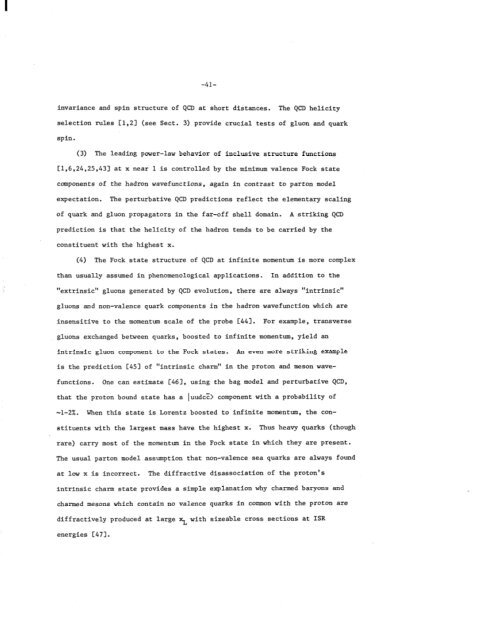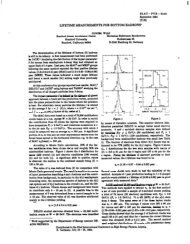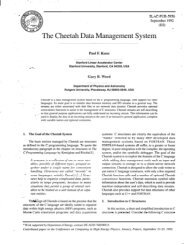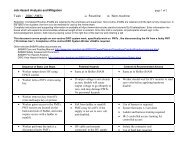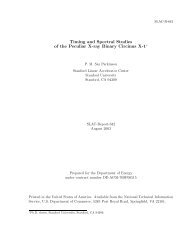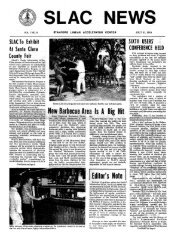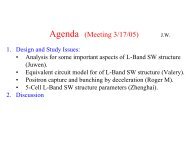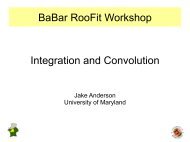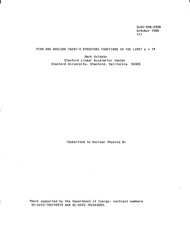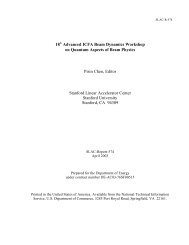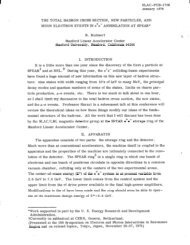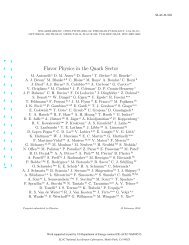slac-pub-2605 - SLAC - Stanford University
slac-pub-2605 - SLAC - Stanford University
slac-pub-2605 - SLAC - Stanford University
You also want an ePaper? Increase the reach of your titles
YUMPU automatically turns print PDFs into web optimized ePapers that Google loves.
I<br />
invariance and spin structure of QCD at short distances. The QCD helicity<br />
selection rules Cl,21 (see Sect. 3) provide crucial tests of gluon and quark<br />
spin.<br />
-41-<br />
(3) The leading power-law behavior of inclusive structure functions<br />
C1,6,24,25,431 at x near 1 is controlled by the minimum valence Fock state<br />
components of the hadron wavefunctions, again in contrast to parton model<br />
expectation. The perturbative QCD predictions reflect the elementary scaling<br />
of quark and gluon propagators in the far-off shell domain. A striking QCD<br />
prediction is that the helicity of the hadron tends to be carried by the<br />
constituent with the highest x.<br />
(4) The Fock state structure of QCD at infinite momentum is more complex<br />
than usually assumed in phenomenological applications. In addition to the<br />
"extrinsic" gluons generated by QCD evolution, there are always "intrinsic"<br />
gluons and non-valence quark components in the hadron wavefunction which are<br />
insensitive to the momentum scale of the probe [441. For example, transverse<br />
gluons exchanged between quarks, boosted to infinite momentum, yield an<br />
intrinsic gluon component to the Fock states. An even more striking example<br />
is the prediction C451 of "intrinsic charm" in the proton and meson wave-<br />
functions. One can estimate C463, using the bag model and perturbative QCD,<br />
that the proton bound state has a luudcc> component with a probability of<br />
-l-2%. When this state is Lorentz boosted to infinite momentum, the con-<br />
stituents with the largest mass have the highest x. Thus heavy quarks (though<br />
rare) carry most of the momentum in the Fock state in which they are present.<br />
The usual parton model assumption that non-valence sea quarks are always found<br />
at low x is incorrect. The diffractive disassociation of the proton's<br />
intrinsic charm state provides a simple explanation why charmed baryons and<br />
charmed mesons which contain no valence quarks in common with the proton are<br />
diffractively produced at large xL with sizeable cross sections at TSR<br />
energies 1471.


